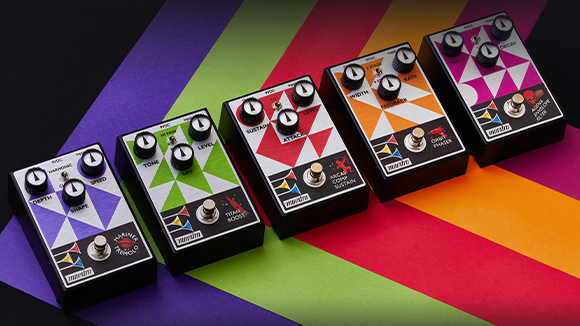MusicRadar Verdict
The second batch of stompboxes in Maestro’s resurrection picks up where the first left off, with some serious options for signal chain essentials such as compression and boost, with its tremolo, envelope filter and phaser all capable of some top-quality sounds.
Pros
- +
The sounds are impressive.
- +
Intuitive yet versatile designs.
- +
Fair price.
- +
Enclosures are easy on the eye.
Cons
- -
Size might be an issue for those with crowded 'boards.
MusicRadar's got your back
Maestro Electronics Originals Collection 2: What is it?
Gibson summoning the Maestro brand back from the dead was one of the biggest talking points in guitar effects pedals in recent years, with its Original Collection making its debut earlier this year with a quintet of stompboxes that reintroduced guitarists with a lost classic and a host of new designs.
The most famous of which riffed on the first-ever fuzz pedal, the FZ-1, renamed as the FZ-M, with new features, in an all-new enclosure – and it is a design principle that Maestro has stuck to with all of its releases so far, with each of its circuits fitting into the square-ish, wedge-shaped form of a three-knob unit with a toggle switch for alternate modes.
Maestro followed that initial run with the release of five more pedals; the Agena Envelope Filter, Arcas Compressor Sustainer, Mariner Tremolo, Orbit Phaser, and Titan Boost.
The apple has not fallen far from the tree with these, each of them has a similarly designed enclosure, the blue, green and red bugle LEDs illuminating the Maestro logo when the effect is active, the top-mounted jacks that make pedalboard setup a little easier, compensating for the fact that these, in real terms, are about a one-and-a-third times the size of a Boss Compact Series pedal.
Not huge, but the 5.04” x 3.45” x 2.5” dimensions are definitely something to consider if you are running low on space. All are all-analogue, true bypass, and can be operated via a 9V battery or pedalboard power supply, with a single footswitch to engage or bypass the effect. They all feel reassuringly sturdy, weighing in at 1.2 lbs.
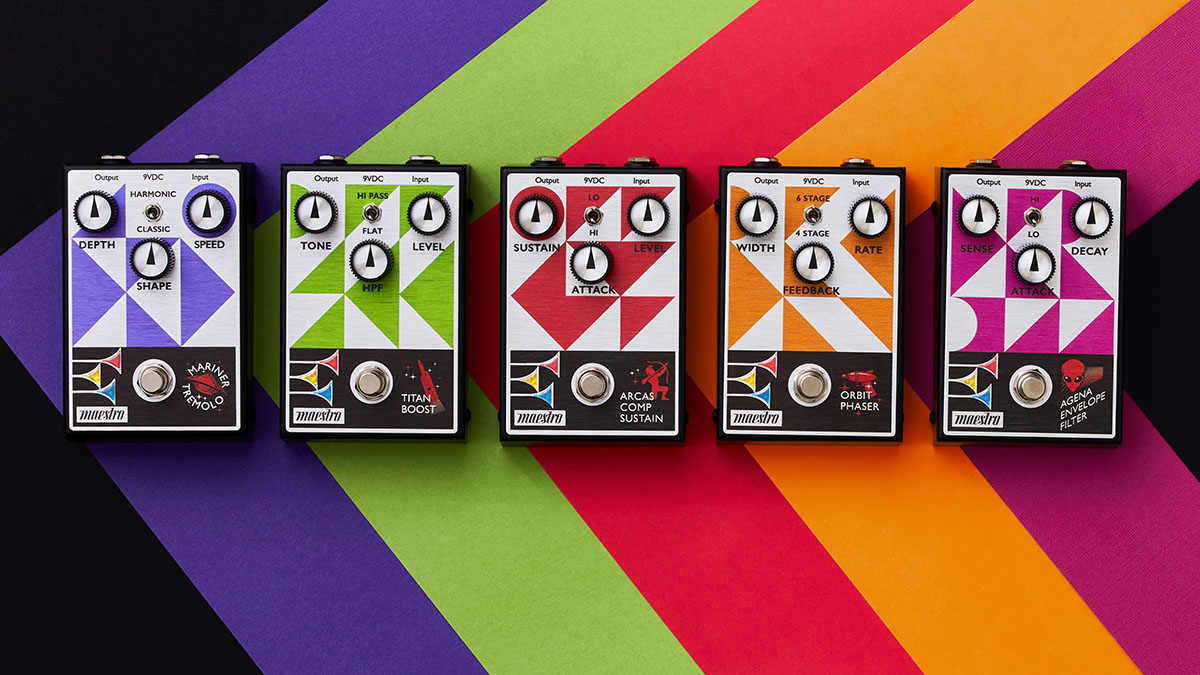
If the first release covered all bases with the essentials, these range from the subtle but essential (such as Arcas) to the bonkers (the Agena). Once more they are competitively priced, with RRP starting from £155 / $149. Not bad.
Let’s look at them in the order you might have them in the signal chain, starting with the Arcas Compressor Sustainer. Once upon a time, Maestro had a Sustainer SS-2 in the catalog – emphasis on the sustain. It had controls for Sustain and Volume and a Hi/Lo input switch, but this is a little different, presenting as a compressor with controls for Sustain, Attack and Level, and a Hi/Lo toggle switch that selects between too modes of sensitivity.
Want all the hottest music and gear news, reviews, deals, features and more, direct to your inbox? Sign up here.
In Hi it takes particularly close attention to your picking dynamics and transients. Lo? Well, it’s less sensitive, willing to let things slide, so to speak. Sustain controls the level of gain applied to the compression, while Attack sets how quickly the compression starts.
Next up, the Titan is a boost pedal with controls for Tone, Volume and HPF – a variable high-pass filter that is activated when you adjust the toggle switch. The switch’s other mode offers a flat response.
The Mariner is a tremolo pedal inspired by onboard guitar amp tremolos of yore, with a switch that makes it a bona fide twofer, offering both Harmonic and Classic modes, with dials for Depth, Speed and Shape, the latter offering a triangle waveform when fully counterclockwise, to a square wave at the other extreme.
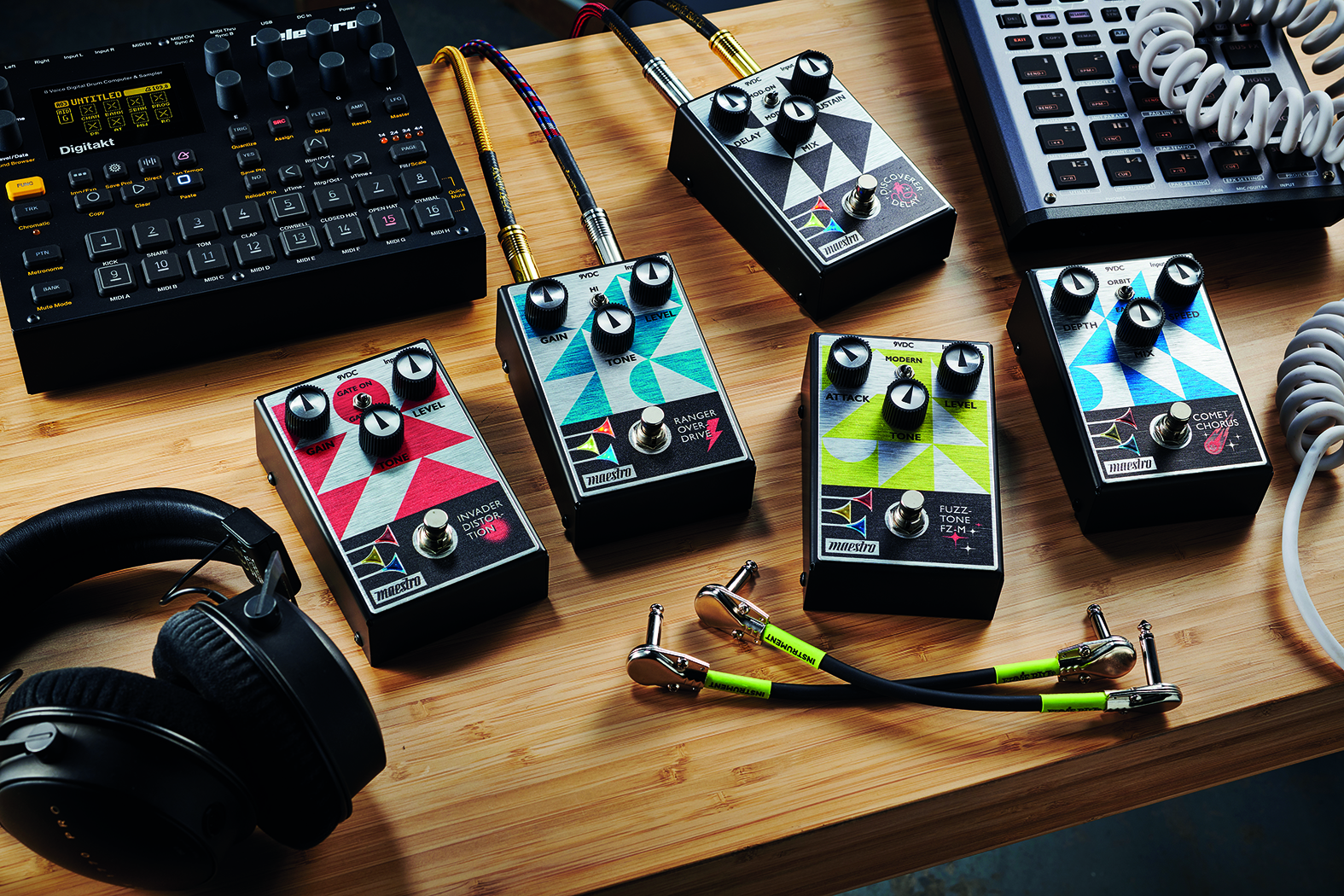
• Maestro Original Collection
Maestro rides again with a mixed bag of effects that bring about a vintage look and sound, dripping in harmonic distortion.
What is surprising is that Maestro could hold off on the Orbit Phaser until this second batch of pedals. The phaser, after all, was another first for the brand when it released the Tom Oberheim-designed Maestro PS-1 back in the ‘70s. The PS-1 was a three-speed phase shifter and the first of its kind on the market, with the audio-electrical genius Oberheim looking to replicate a Leslie rotating speaker effect.
The Orbit can be run as a four or a six-stage phaser, and has a familiar complement of r Width, Feedback, and Rate controls – well, familiar for those who have not sworn fealty to a single-knob design.
Finally, the Agena is an envelope filter that has controls for Sense, Decay and Attack, with a Hi/Lo switch for selecting which frequencies the filter focuses on. The envelope filter can be a niche effect, often known as an auto-wah, and typically sequestered in the realm of soul, disco and funk.
Where the wah pedal requires your foot to rock the treadle and adjust the filter sweep, the envelope filter does that work for you and then some, with the Attack adjusting how quickly the filter opens, Decay controlling how long it stays open for, and Sense (in this case) controlling the sensitivity of an effect which reacts to your picking dynamics.
Maestro’s presentation of this effect is a tantalising prospect; a simple, easy-to-use layout, but with plenty of control over the sound. But then this is true of all the pedals in this range – and it is a good quality to have.
Maestro Electronics Arcas Compressor Sustainer: Performance and verdict
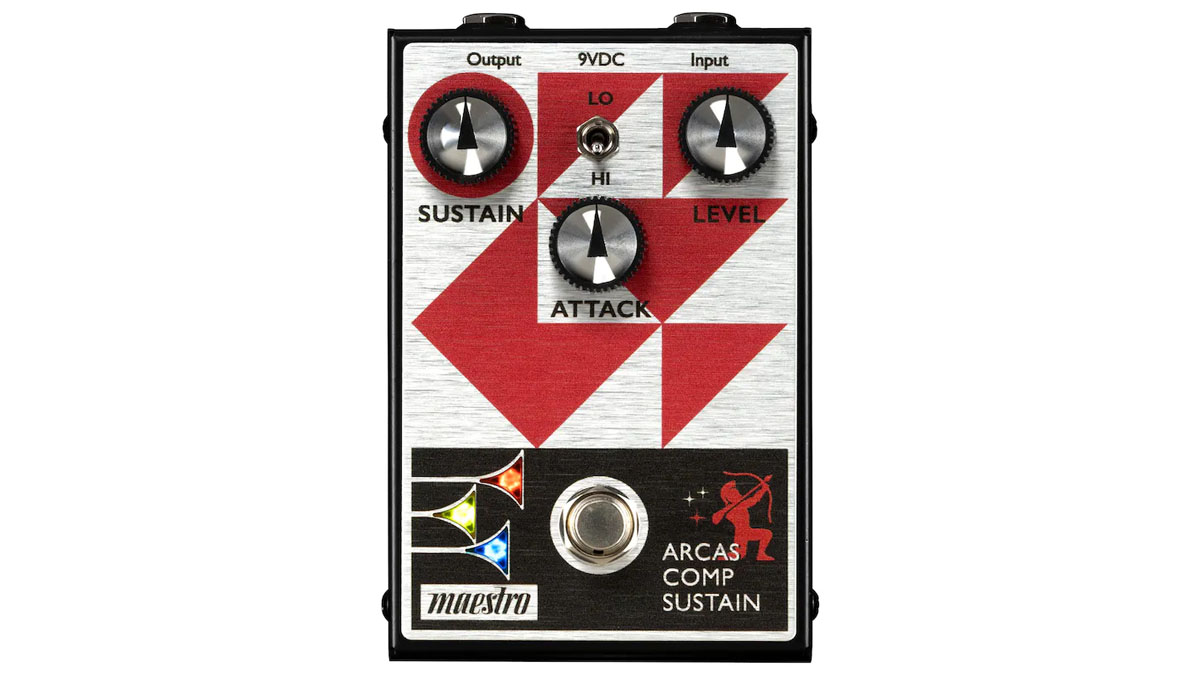
The compressor pedal is to electric guitar tone what eau de cologne is to personal grooming. It applies the spit and the polish, tidying up your transients, and like cologne, you don’t want to overdo it. The Arcas makes your job easy on that count, giving you plenty of control over the level of squash.
With unity gain just past noon on the Level dial, setting the rest of the control so noon and the toggle switch to Lo just made things sound a little bit better when engaging the compressor. All matters of sound and tone are subjective – your mileage might vary, yadda yadda yadda – but the more subtle settings such as this make everything sound that bit juicy.
Chords ring out, notes bloom, and it all comes together faster than you can say 'always-on tone sweetener'
Chords ring out, notes bloom, and it all comes together faster than you can say “always-on tone sweetener”. But a few turns of the dial demonstrate just how versatile the Arcas is. Dial up the attack, nudge the Sustain up a bit, and switch over to Hi sensitivity and it feels tight and grippy, the sort of sound that flatters precision for country picking, and for some forms of shred, levelling out legato.
Maestro Electronics Titan Boost: Performance and verdict
The Titan’s Level control is packing some heat, capable of hitting your amp on the button with 25dB of boost. We would expect nothing less; no point in calling your boost Titan and then giving it a feather to tickle your amplifier’s front end.
Still, what seals the deal for us with the Titan is that it is a boost, yes, adding instant hair to what was hitherto a clean tone for on-the-edge blues guitar, but the EQing options make it partner well with all different kinds of guitars – with humbuckers, single-coils, P-90s, etc – and amplifiers, the dull ones, the shrill ones.
With the toggle in the Flat position, all this EQ’ing comes via a traditional Tone control, i.e. operating as a variable low-pass filter, brightening things as you turn it clockwise, and vice versa, and that will be enough for many. Especially for those who just want to fine-tune their tone hit the amp hard for when your solo kicks in.
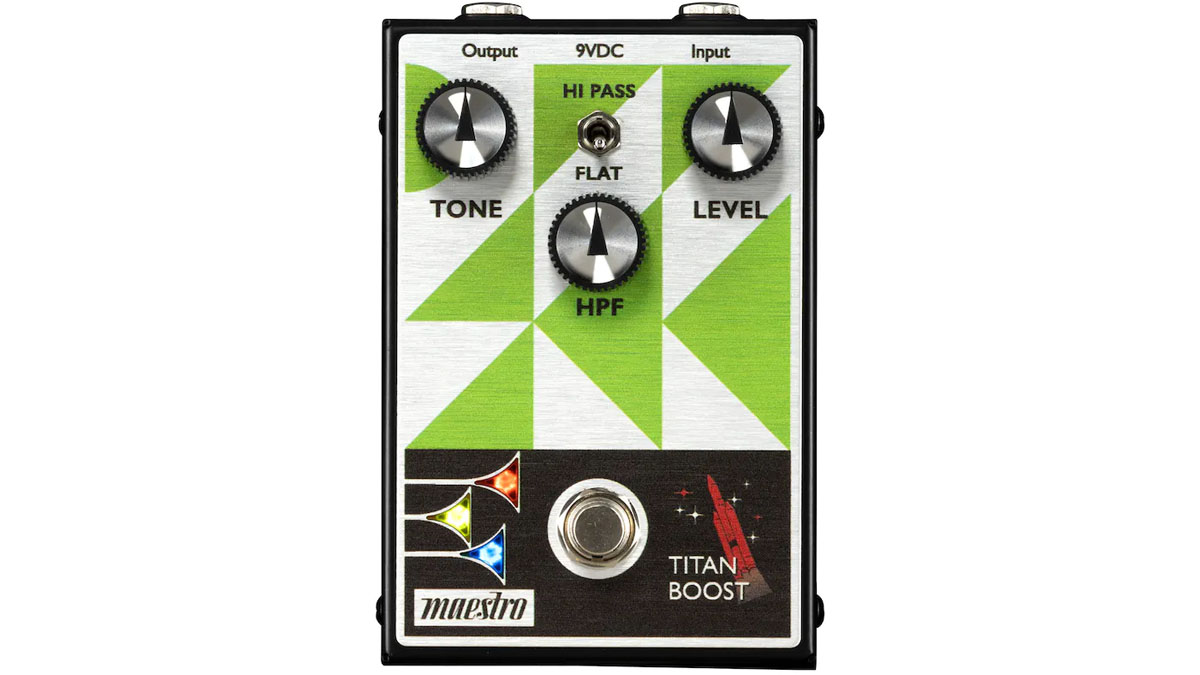
Those, however, who just can’t get any space in a mix, or get a tone out of a dull-sounding pickup, can pop it into HPF mode and take more control. At its extremes, it can make a Telecaster’s neck pickup bite into something all cat-scratchy, or put that sibilance back in its basket, offering a warmer, nasal tone, that some blues-rock players icons might call a ‘woman tone’.
There is a huge utilitarian appeal to the Titan Boost. It’s named like an energy drink, and it will sugar-rush your tone
Like the Arcas, there is a huge utilitarian appeal to the Titan Boost. It’s named like an energy drink, and it will sugar-rush your tone. We have all been there on the pub circuit when the mix is tricky, the beer cloudy, and the other guitarist has wheeled out the Helix and is going to blow you away in the loudness wars. This is the sort of thing to give you the extra oomph.
Or even at home, when you’ve got a tube amp and you want to work it that little bit harder without colouring things with a drive, it works a treat for adding some spiky warmth. Point the Level at to 1 or 2 o’clock, boost the tone, and it’s like a strong cup of coffee for your sound.
Maestro Electronics Orbit Phaser: Performance and verdict
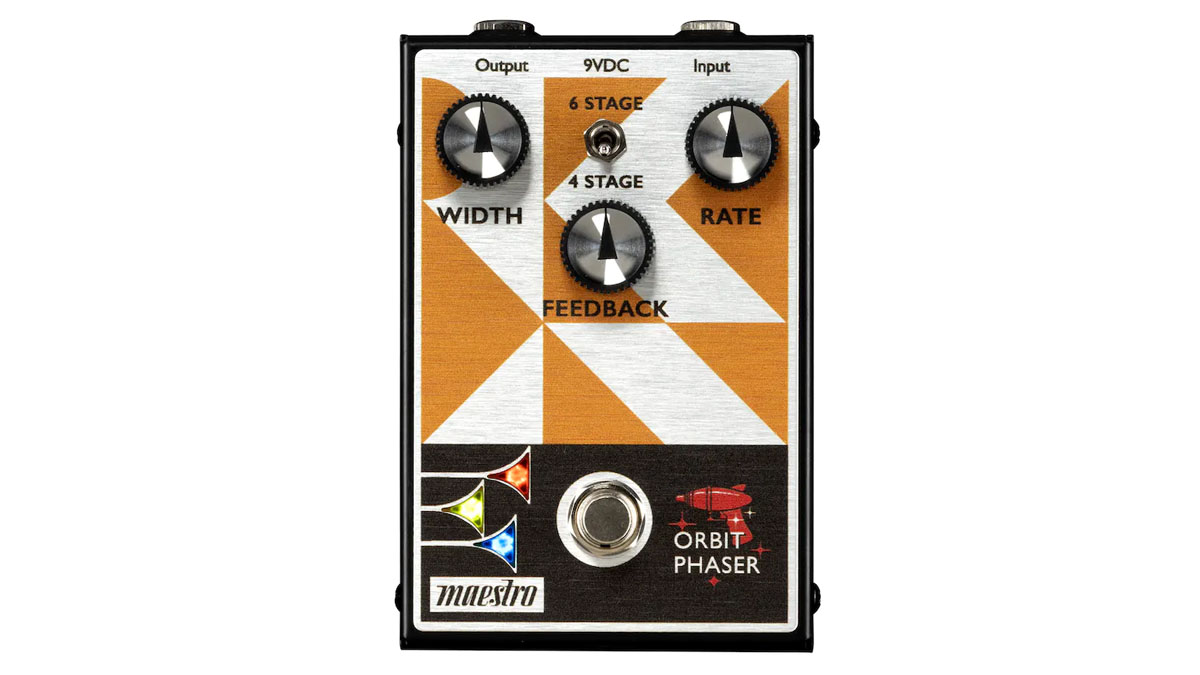
That the original phaser was designed to mimic a rotating speaker only serves to remind us how liminal the boundaries are between modulation effects. They might all be doing different things but there are many moments where subtle settings – be it on a chorus, flanger or phaser – that add movement without calling too much attention to what is actually engaged in the signal chain.
At its most subtle settings, the Orbit just adds vibe. Both in the literal and figurative senses, as there’s some Uni-Vibe in the air to it, which makes sense because the Uni-Vibe is essentially a four-step phaser with a photocell, and vibe in the je ne sais quoi of the whole ‘60s psychedelic sensibility.
This is a pedal too that is wired for owners of electric 12-strings to go all Laurel Canyon on a heavy trip with. But then, the jet engine woosh and chew can be put to work on hard rock tones, too, given them that chewy ‘80s quality. Or with clean tones, all set to the middle, you can get that mellow funk going on, the mellow yellows and earthtones of the mid-‘70s.
This is a leitmotif of the Original Collection, where sounds of yesteryear are easily dialled in without the pedals calling attention to themselves as clones.
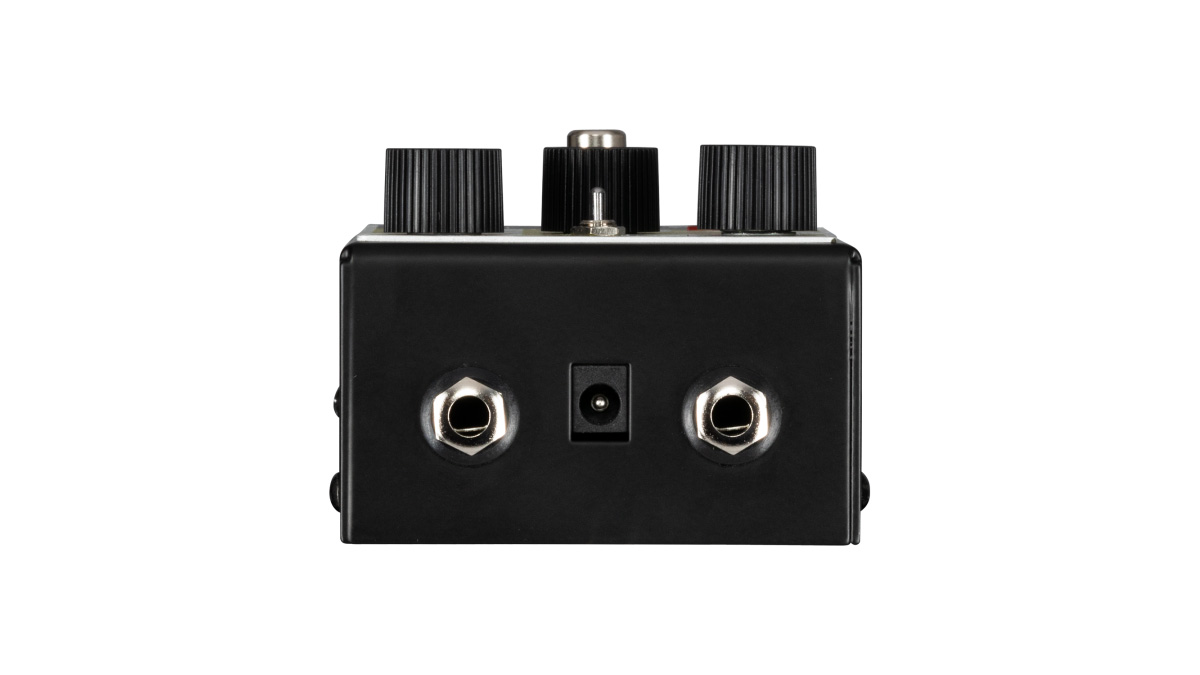
Things can get quite heady with the Feedback dial dimed. There is a pleasing range to all the controls here. Fast warbling strangeness can enliven your arpeggios. Deeper phase settings take on a flanger-esque quality, lighter settings could pass for chorus.
Often we talk about pedals being in a shoot-out with like-for-like pedals – as in assessing the Orbit on its merits vs the Fender Lost Highway or Walrus Audio’s Lillian – but for casual consumers, the conversation can often be widened to include all modulation types.
Sure, if you want chorus, don’t buy the Orbit, but if you’re auditioning something to give your sound some movement and depth, it can do the job and then some.
Maestro Electronics Mariner Tremolo: Performance and verdict

The Mariner’s two distinct flavours of tremolo are both inspired by those you might find on an old vintage tube amp; Classic, which is pure amplitude modulation, and adjustable pulse of attenuation for adding rhythmic movement and depth in your sound; Harmonic, which does something similar but with the effect splitting the signal between high and low-frequencies and the pulse of the tremolo alternating between the two.
Like everything in popular culture, Guitar players’ tastes in effects come and go in trends. Right now, the harmonic tremolo is having a moment. It’s vibe-y, no question, recalling the tremolo sounds found on old early ‘60s Fender amps such as the Bandmaster and Vibrasonic, and for the modulation-curious, those not willing to commit fully and inaugurate the phaser – another effect similarly having a moment – on their pedalboard, there is a disorientating quality to the harmonic tremolo that might just fit the bill, like having some Uni-Vibe tones without shouting about it.
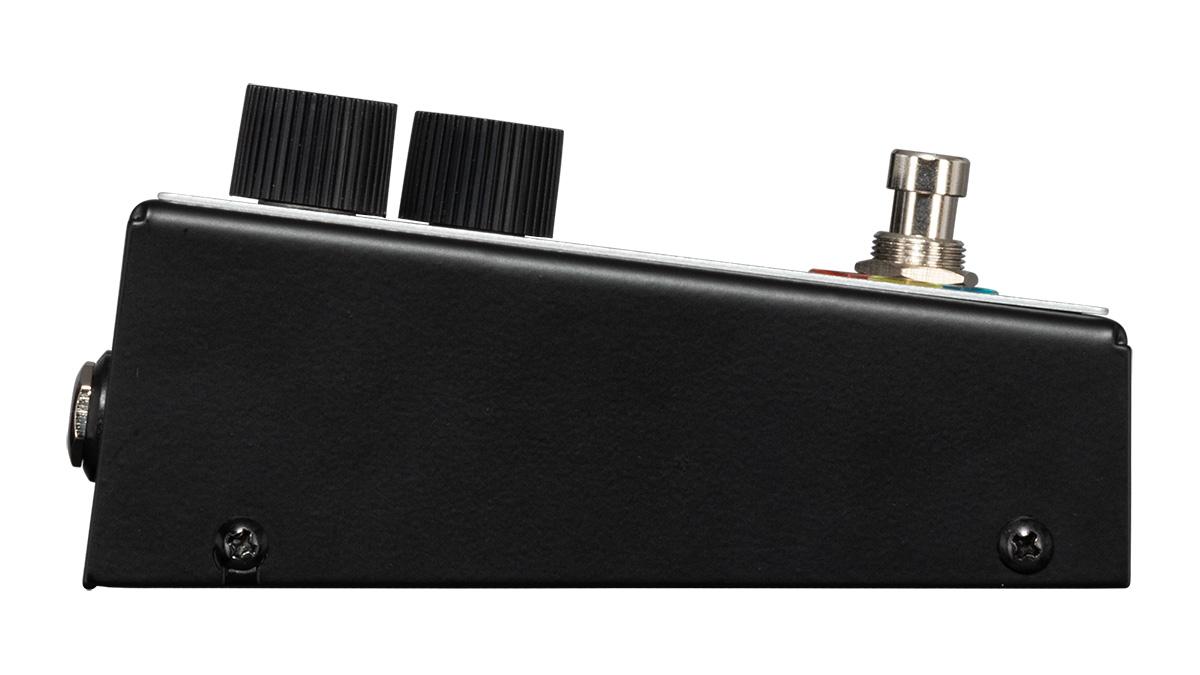
The Classic tremolo, by contrast, is exactly that, and it is remarkable, after all these years, that one of the oldest and most simple effects remains so thrilling. It helps when, as Maestro does here, you get plenty of range on those Depth and Speed controls, allowing for a super-slow thwamp-thwamp-thwamp pulse or a hyper warble, and a tone that visits all stations in between.
The character of this pulse can be adjusted via the Shape dial, with the more subtle gradated swell of the triangle wave at one extreme, the chop of a square at the other, and again, an abundance of intriguing stops along the way.
As stompboxes go, the Mariner is channelling something from deep in the archive of electric guitar tone and demonstrating how the classics never go out of style. Not when they sound like this.
Maestro Electronics Agena Envelope Filter: Performance and verdict
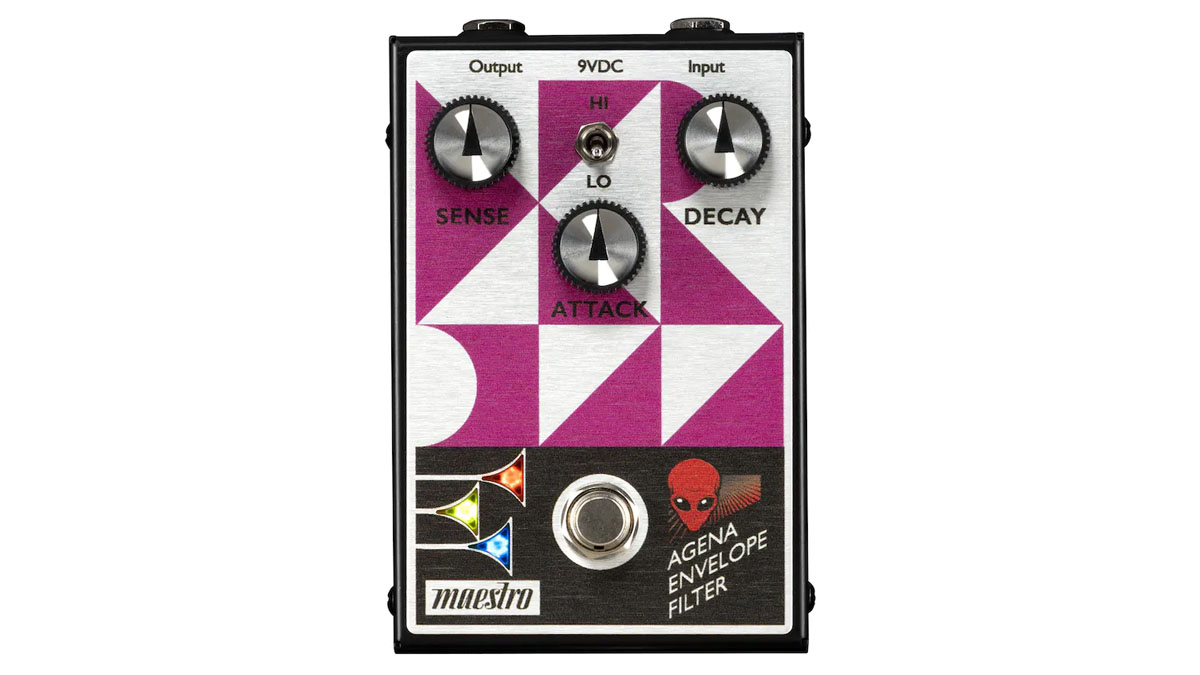
Last but not least, but definitely the most out-there of the Maestro Original Collection so far, is the Agena Envelope Filter. The funny thing about these envelope filters, you turn them on, your fretting hand involuntary frets an E9 chord, and the picking hand wrist loosens up. It’s the damnedest thing. And you might even find yourself gravitating to the single-coils in your life.
All that is true here. Indeed, turn the Agena on and it’s the hour of Boogie Nights, funk, disco, and uncosted fun times in retro-tone land. But for a sound that evokes the ‘70s, there is something still very radical about the envelope filter – effectively a wah that reacts to your playing as opposed to the depression of your foot upon a treadle.
Here you have a filter that opens and closes as per your picking dynamics. Adjust Sense for sensitivity, where at higher settings you just have to caress the high E and the Agena translates it into vowels, or lower, where you can be playing softly for the most subtle movement – like someone has slipped your tone a Mickey Finn – and then hit the strings hard and the pedal responds with a whelp in now.
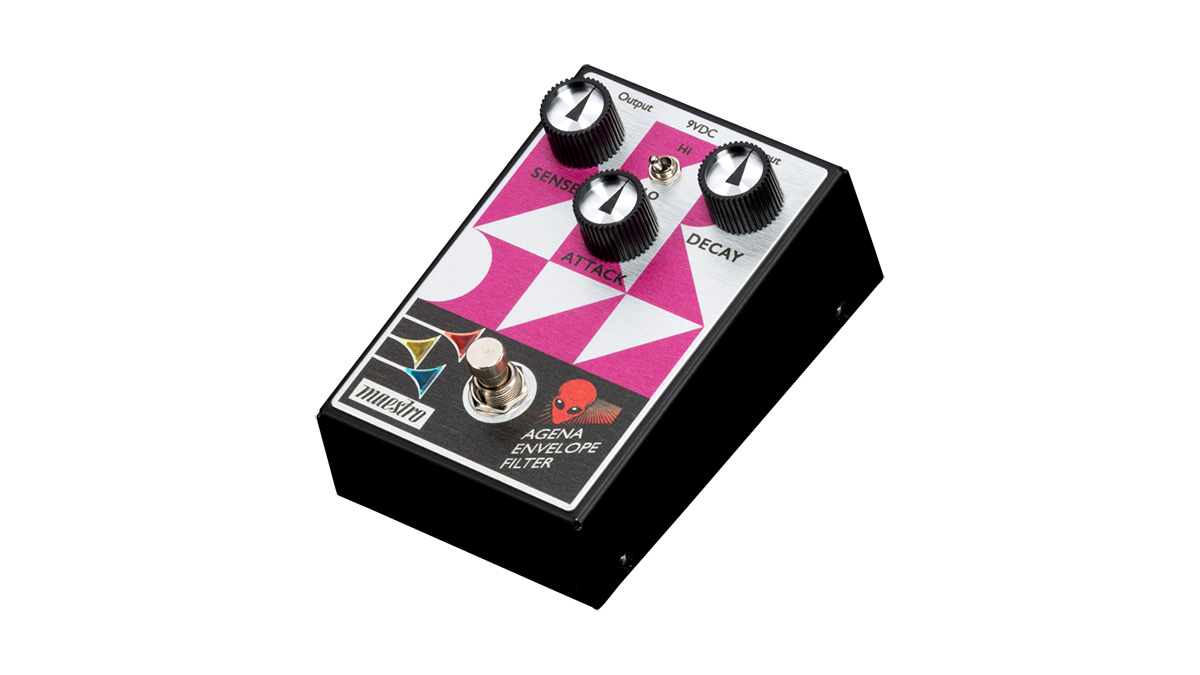
That you are subordinating control of the effect to the pedal’s settings as a opposed to a treadle means that you have to think carefully about how fast you want the filter to open and close, how long you want it to stay open for, and ultimately how dramatic you want it to sound. The Hi/Lo switch could be thought of as a character switch, affecting the frequencies the filter focus on, allowing you to go low, throaty and squelchy, or a little more nasal and duck quack.
Sometimes, an envelope filter can feel like a luxury, particularly if you are not operating, y’know, in the funk space per se, but crucially, the Agena is a cinch to get to grips with, the Hi/Lo switch not only lends it a sense of duality but makes it work well with humbucker and single-coil alike.
While single-coils might be your first instinct, a brawny humbucker sounds very cool through this, whether you are using the Agena for texturing a rhythm part or for going off-piste in a solo. Fun. Niche, but fun.
Maestro Electronics Originals Collection 2: Hands-on demos
Maestro Electronics
Let's Play All
Maestro Electronics Originals Collection 2: Specifications
- ORIGIN: CHINA
- TYPE: Compressor/sustainer, boost, tremolo, phaser, envelope filter
- CONTROLS: Arcas – Sustain, Attack, Level, Hi/Lo toggle switch; Titan – Tone, Volume, HPF, HPF/Flat toggle switch; Mariner – Depth, Speed, Shape, Classic/Harmonic toggle switch; Orbit Phaser – Width, Feedback, Rate, 4 or 6-step toggle switch; Agena – Sense, Decay, Attack, Hi/Lo toggle switch
- BYPASS: True
- POWER: 9V DC, battery
- CONTACT: Maestro Electronics
MusicRadar is the number one website for music-makers of all kinds, be they guitarists, drummers, keyboard players, DJs or producers...
- GEAR: We help musicians find the best gear with top-ranking gear round-ups and high-quality, authoritative reviews by a wide team of highly experienced experts.
- TIPS: We also provide tuition, from bite-sized tips to advanced work-outs and guidance from recognised musicians and stars.
- STARS: We talk to musicians and stars about their creative processes, and the nuts and bolts of their gear and technique. We give fans an insight into the craft of music-making that no other music website can.
